Estefania Puerta: The Ghost in the Hallway
November 14th, 2024 - January 4th, 2025-
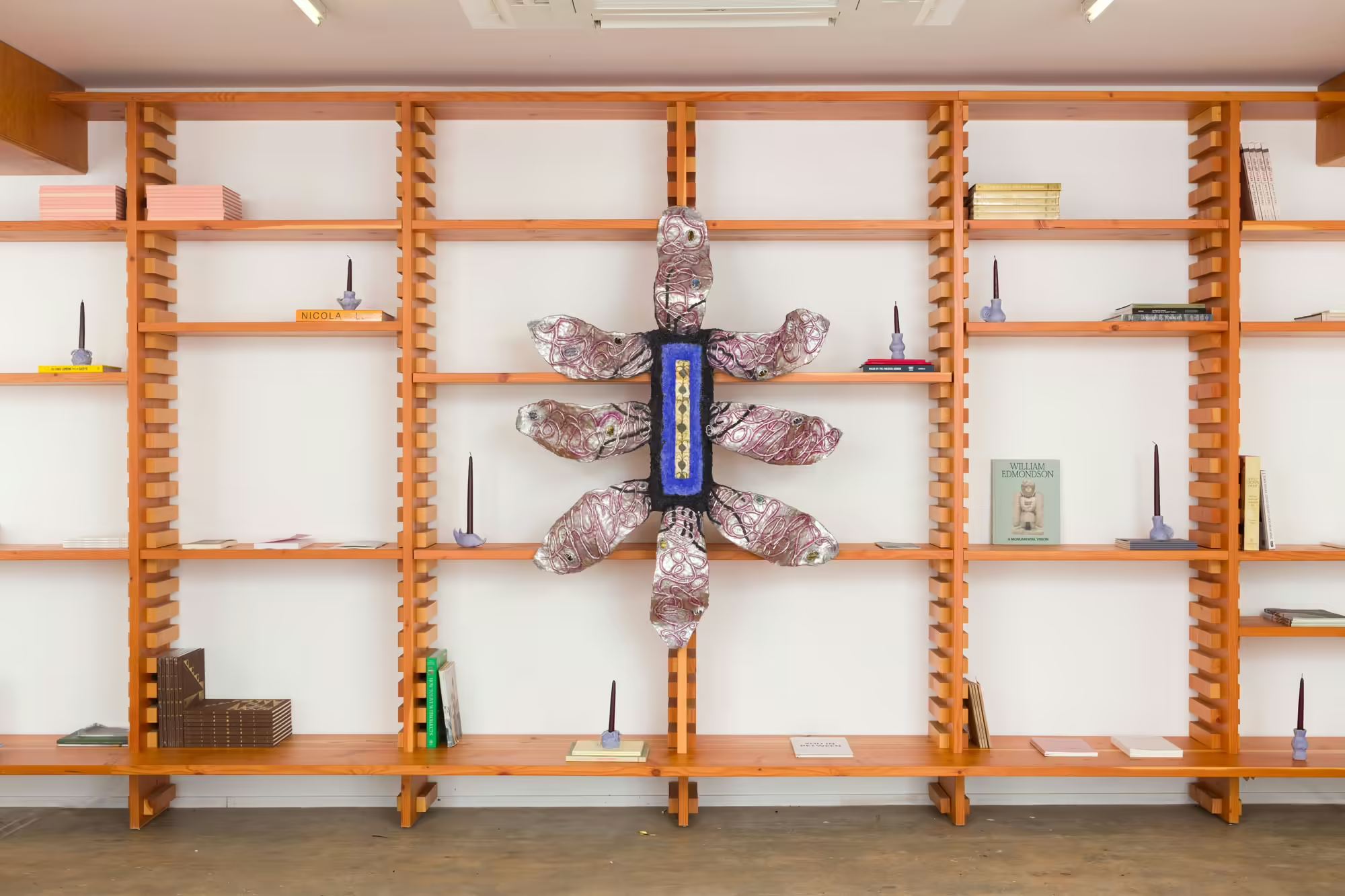
Estefania Puerta: The Ghost in the Hallway, installation view.
Nina Johnson presents The Ghost in the Hallway, an exhibition of mixed-media objects by Estafania Puerta that challenges how “carrier” is defined, both functionally— depicted in vessels, vitrines, and candle holders—and metaphorically, the way materials hold meaning and create personal or symbolic value. Puerta’s practice is rooted in materiality, incorporating inorganic and organic materials “to form a new poetics of transformation and translation.” Through the works in this exhibition, she explores the idea of boundary or border in her material choices and the objects she creates—what is display, or what acts as a kind of skin or exoskeleton protecting and holding something within? The complexity of these works—the variety of their materials and the range of the forms they take—create worlds all their own, layered and nuanced.
-
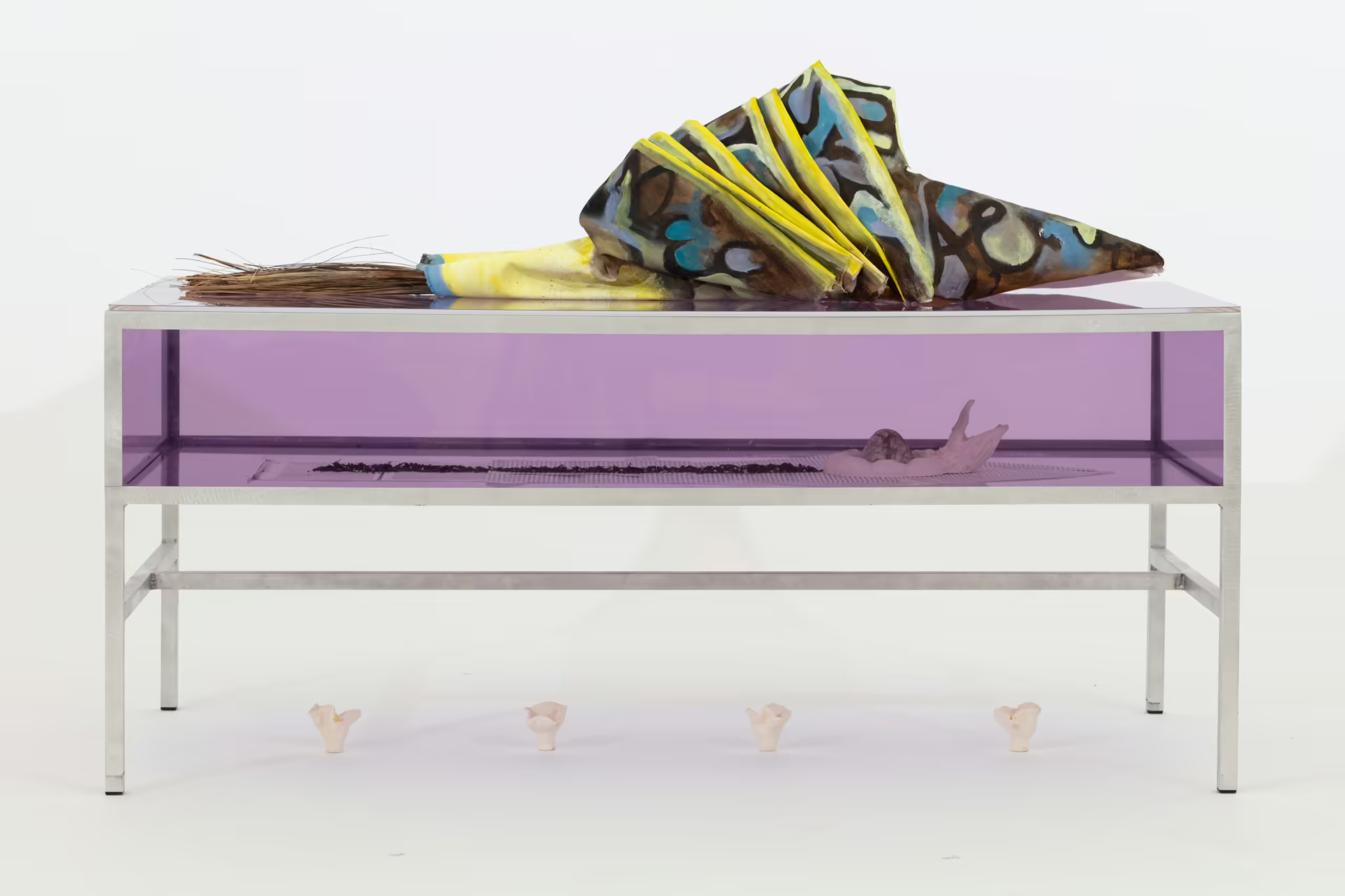
Estefania Puerta, Reproduction Question, 2024, Canvas, acrylic, polycarbonate, vinyl, palm fronds from Doria Pamhilij, inkjet on paper, aluminum, ceramic, artist's hair, artist's wiriting, honey, porcelain, soil from studio plant, and paper pulp, 20.25 x 47 x 22 in.
-
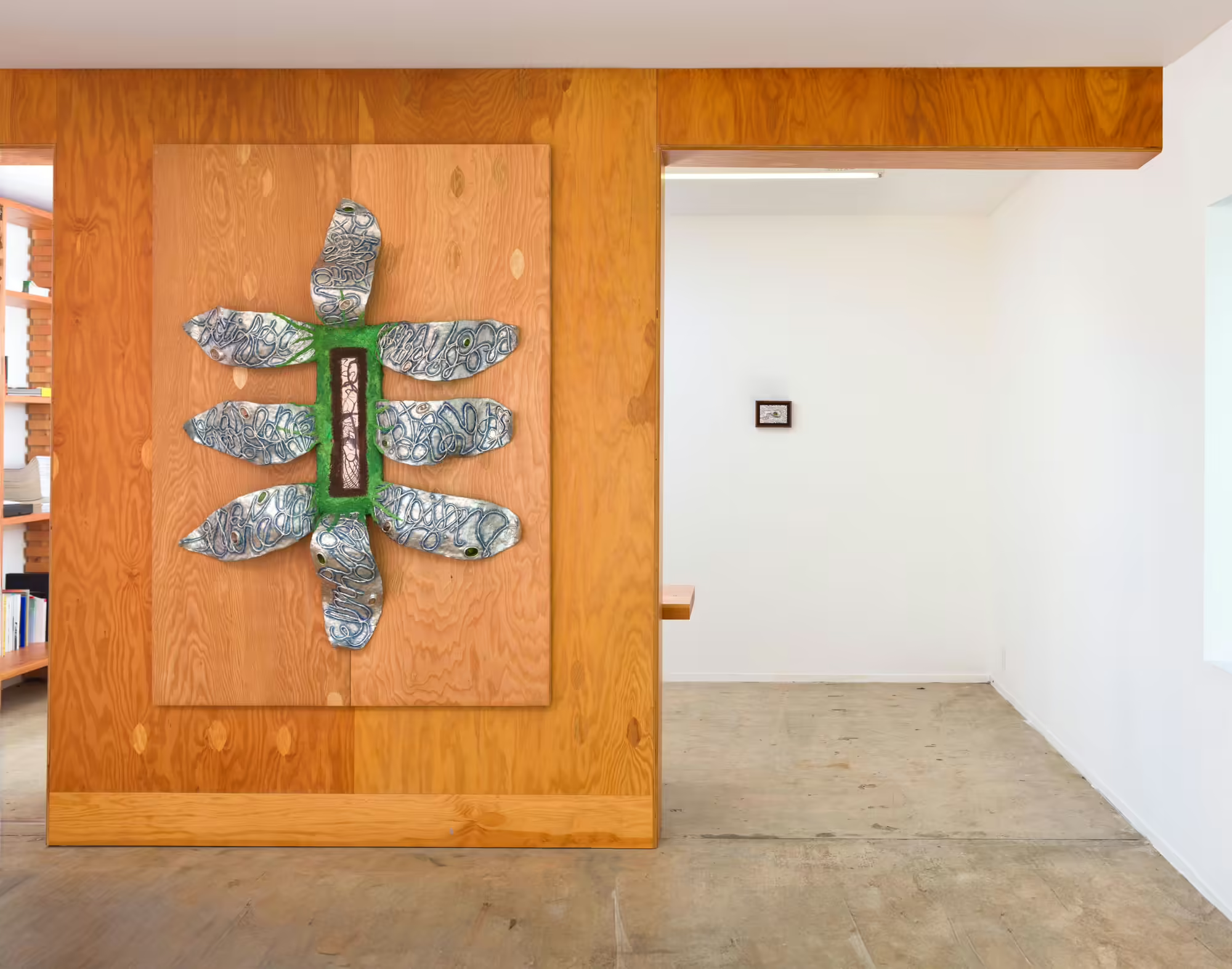
Estefania Puerta: The Ghost in the Hallway, installation view.
According to Puerta, the concept of the ghost in the hallway “is the moment in which we seem to catch something or someone from the corner of our eye that is briefly contained by the hallway—the hallway [acts as] a framing device, lets us see the ghost perfectly, as though it has been waiting there for us all along. The ghost in the hallway is a metaphor for the ephemeral that gets contained, even if in brief moments. The way a tomb contains a spirit, our mouths contain [language], and our collective consciousness contains histories. So much about this show is about containment and what either blooms outward or pulls you in to [look] closely. How we frame the ghost is how we see it. We give it a body, [we give it] a name, even if the name is half spoken.”
-
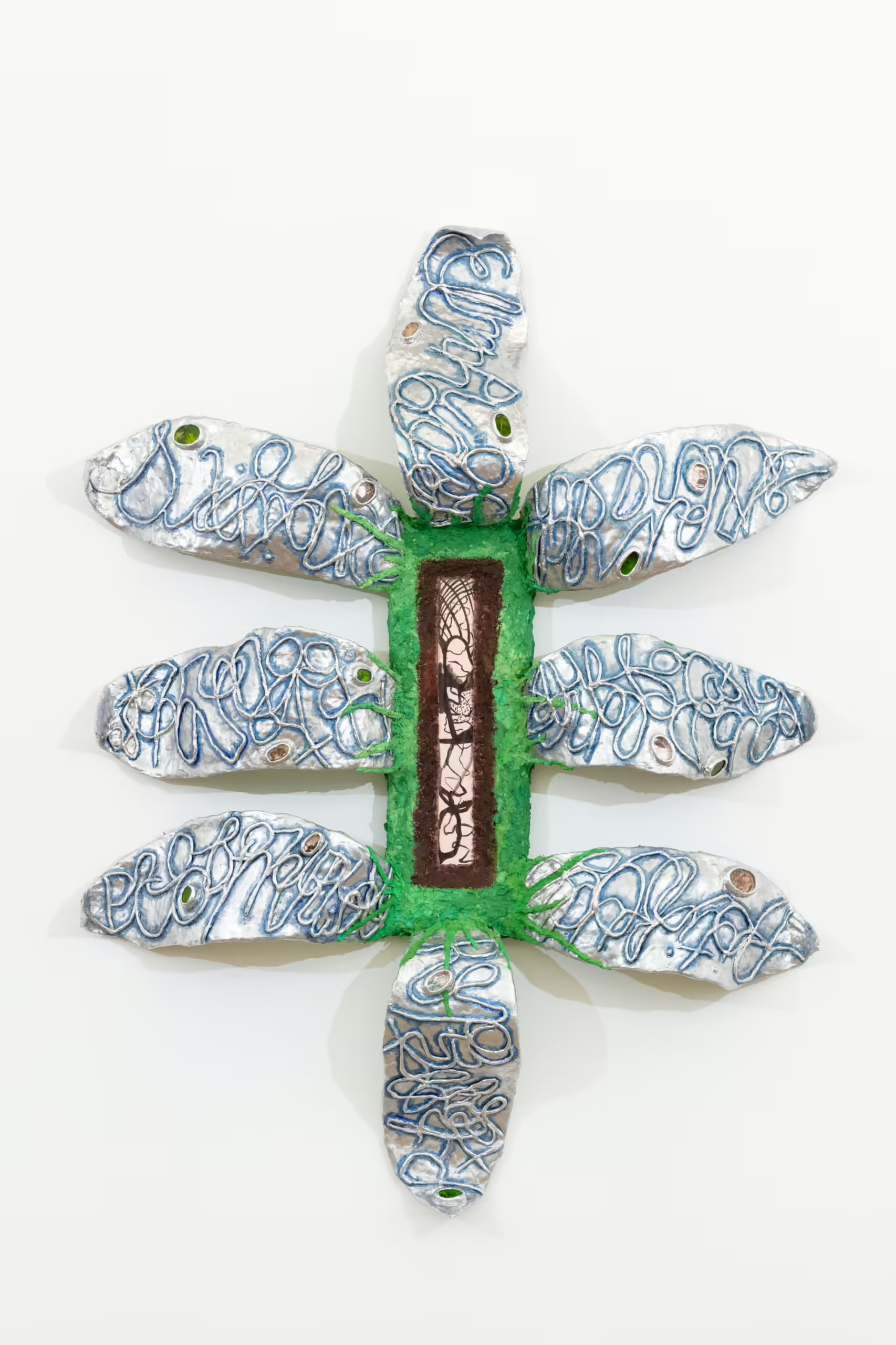
Estefania Puerta, Severed Oreja, 2024, Epoxy clay, stained glass, paper pulp, ink on paper, studio soil, postcards from Rome, enamel, oil on wood panel, 57 x 43.5 x 6.25 in.
-

Estefania Puerta: The Ghost in the Hallway, installation view.
Some of the objects in this show, many of which conceptually began during Puerta’s time in Rome, were inspired by reliquaries and the sarcophagus as something that simultaneously functions as place, object, and a literary document of sorts. In the Bloom series Puerta creates mounted wall pieces using aluminum leaf, paper pulp, and stained glass that encloses a tiny cabinet of materials or drawings. Reproduction Question comprises a coffee table structure with a vitrine on the upper half containing small objects and text, enclosed by a colored Plexiglas; on the table is a canvas sculpture with a hole on top through which viewers can read the text in the vitrine.
-

Estefania Puerta, No Me Veas Asi, 2024, Stained glass, epoxy resin, artist hair, enamel on wood panel, 5.6875 x 7.75 in.
-
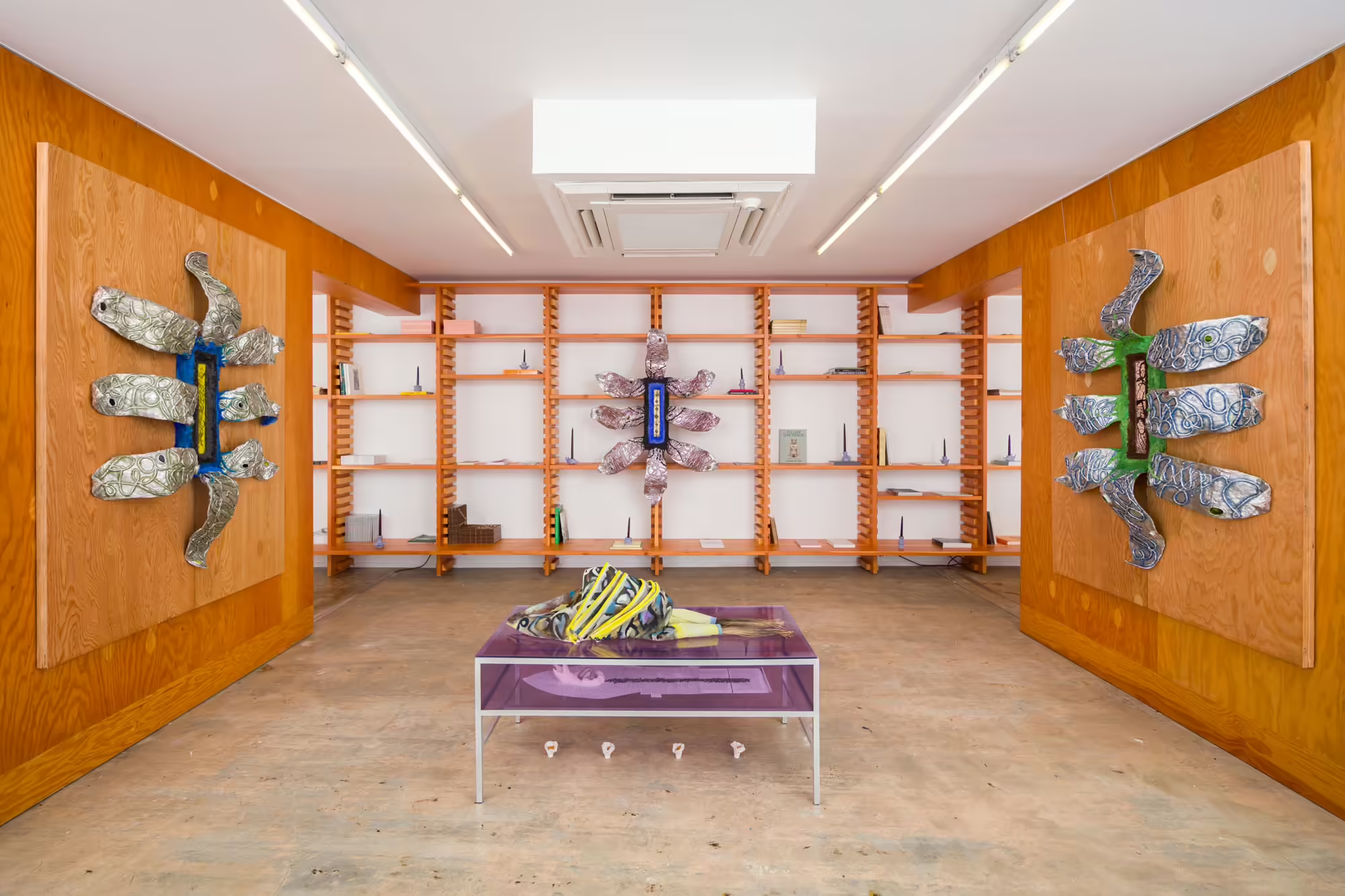
Estefania Puerta: The Ghost in the Hallway, installation view.
Puerta was intent on engaging with the library space directly—“The shelves in the library are their own systems that organize language in the same way these pieces do”—and has scattered candle holders (the shapes of which are in formal conversation with the mounted wall pieces) among its shelves, transforming the space from gallery to reliquary. It is through these many materials, forms, and layers that Puerta simultaneously builds a world and reaches past it into another realm; these works seem to function through and across time as document, relic, but perhaps most urgently, as invocation.
Estafania Puerta: The Ghost in the Hallway is on view in the Exhibition Library through January 4th, 2025.
-

Estefania Puerta, Mother Tongue, 2024, Porcelain, Dimensions variable
Estefania Puerta is interested in what is gained and lost in the process of recontextualizing materials. Her practice is rooted in worldmaking, shapeshifting, border crossing, and language failure. Her research in psychoanalysis as it relates to the history of hysteria, natural medicine, folklore, and personal histories of immigration and undocumentaion in the U.S. questions what is considered “natural” and “alien. Puerta was recently awarded the 2023-2024 Rome Prize by the American Academy in Rome. Her work has been exhibited at Proyecto N.A.S.A.L (CDMX and Guayaquil), Fortnight Institute (NYC), Micki Meng (SF), Species (ATL), and was included in the New England Triennial at DeCordova Sculpture Park and Museum. Puerta received her MFA from Yale School of Art. She was born in Colombia and currently lives and works between Vermont and New York.